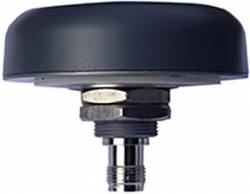Tallysman Wireless of Ottawa, Canada, announced its new TW162A automotive-grade smart power GNSS signal splitter. It supports the full GNSS spectrum: GPS/QZSS-L1/L2/L5, QZSS-L6, GLONASS-G1/G2/G3, Galileo-E1/E5a/E5b/E6, BeiDou-B1/B2/B2a/B3 and L-band correction service frequency band.
Vehicle rooftop antenna space is often at a premium, and mission applications often require more than one GNSS receiver. The TW162A Smart Power GNSS signal supports this use case where one GNSS antenna provides the signal to two GNSS receivers. Additionally, it offers several key fail-over and fault-identification features. First, the splitter accepts power from all attached GNSS receivers; if one receiver fails, the next attached receiver automatically provides power to the splitter and antenna. Second, if the antenna fails and does not draw current, all connected receivers will sense a current draw lower than 1 mA, indicating an antenna fault.
The TW162A provides two key features: First, it accepts power from all attached GNSS receivers and selects power from a receiver using the following protocol. Port #1 is given priority if its voltage is within the specified range (3.0 – 12.5 VDC). However, if port #1’s receiver is disconnected or if its receiver power goes below the under-voltage or above the over-voltage specification, the TW162A will switch to the next port in numerical order, as long as its power and voltage are within the expected range. The switching and port selection is, therefore, deterministic. Second, if the antenna fails and does not draw current, the TW162A will provide all connectors with a current draw lower than 1 mA, indicating an antenna fault.
The TW162A offers tops performance in terms of noise figure, isolation, and linearity. TW162A is built with Automotive Electronics Council AEC-Q100 certified components, ensuring a wide operational temperature range and a long service life. Lastly, it has been rigorously tested and is packaged in a durable, compact, and lightweight aluminum housing.





